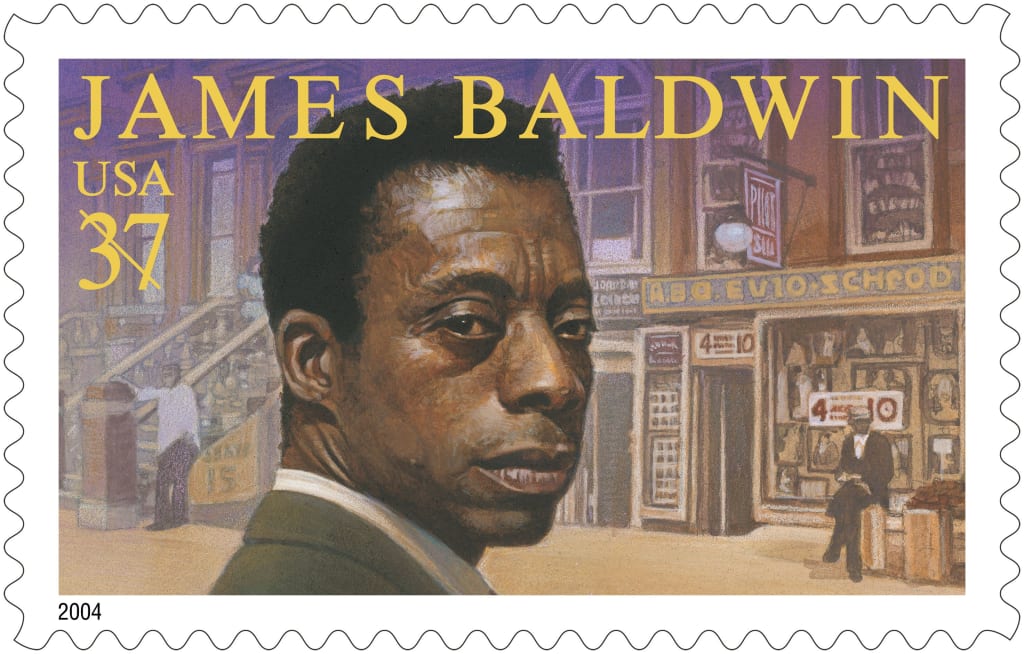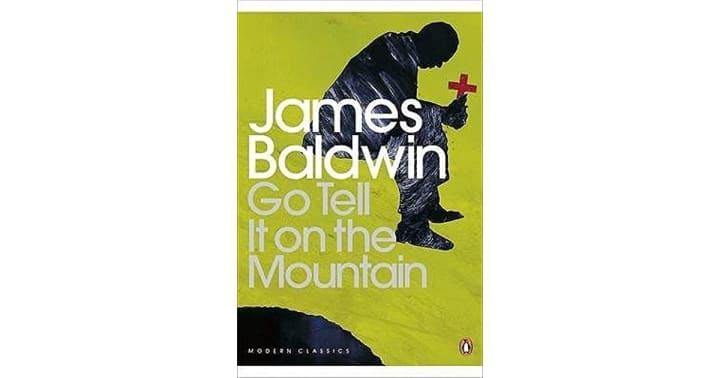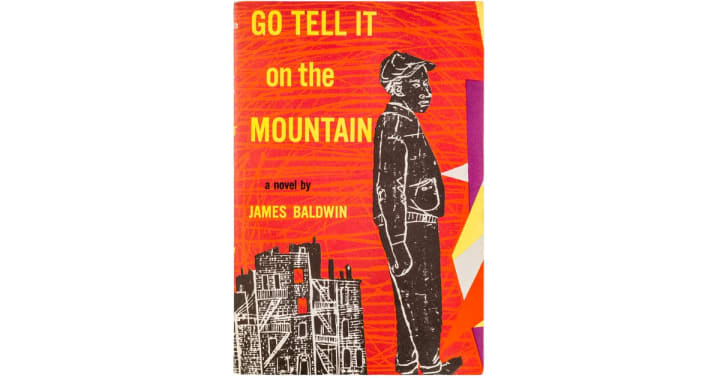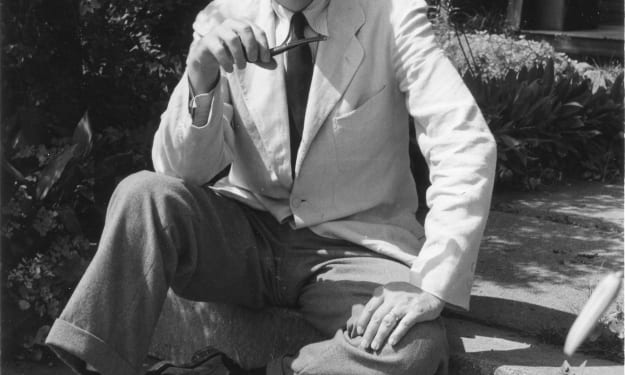"Go Tell it on the Mountain" by James Baldwin
A Reading Experience (Pt.11)

The first time I ever read “Go Tell it on the Mountain” by James Baldwin I was probably about sixteen years’ old. The way in which I discovered the book was through reading a review about it in another book. Realising I hadn’t read the book it was talking about, I sought out the book, read the book and then re-read the review after falling absolutely in love with the novel. This book really did change the way I thought about African American Novels and opened up a whole new world of literature to me in which children and adults alike were well aware of the experience of growing up African American in a White American Society at what was a pretty turbulent period in modern history. It really influenced my view on African American writing and allowed me to keep it as the standard or the bar for what was to become my investigation into the Harlem Renaissance and its most famous novels.
My favourite character in the book is Gabriel Grimes and that is exactly what I said, Gabriel Grimes. I found that whilst reading the book, he is far more complex character than he is made out to be at the beginning of the novel. Even though he is harsh, often violent and abusive, he has his own trials and tribulations as well even though initially, they are not explored in the first parts of the book. What makes Gabriel’s character so great to read is his three dimensional life. When we get to his narrative, we see that his life has been in similar strife to his son’s life. We see that Gabriel’s violence and anger stems from something much earlier than the birthday of John Grimes and that it is Gabriel’s religious values that are holding him down and giving him a chance to express himself positively, however little that positivity may be. Gabriel has many faults in his character but I think that the biggest fault in his character is that he takes a lot of his anger out on his children even though he knows that they understand their position in the current society in which they live. He knows that they are well aware that they are less than others and are treated so, but he still takes out his anger on them since he wishes for them to be stronger against it than he was. It is understandable to an adult, though it is still wrong, and yet it alienates his children from him. They are old enough to understand why they are disliked in white America, but not old enough to understand their father’s anger in great detail. Gabriel represents an entirely different time to John Grimes. John Grimes represents the time after slavery, the time after plantations but the time of very direct mistreatment and racism. The time in which things are changing, however slowly to a new world. But John Grimes is also the character of youth that will experience later, the world of that change. However, Gabriel represents the era before that. The era of plantations and the era of mistreatment, violence and abuse. It is simple to understand why, therefore, Gabriel is a violent character himself. He is only reacting against the society that once treated him that way.

A key theme in the book is violence. The book begins with violence when John Grimes’s brother is stabbed and injured by some white boys. After this, we get violence in many different forms. The first form is physical violence, the next form is emotional abuse which John suffers at by the hands of his father. The next moment of violence is the majority of the narrative by Gabriel Grimes. He seems to have a violent and terrible story buried under all that anger. The final piece of violence is the society in which the family live. A society that is entirely against them. The characters play out this theme by the younger generation not reacting with any form of abuse or violence, or at least trying not to. John Grimes and his brother do not want violence, whereas the older generation are angry about how they were treated with more brutality and yet they try to keep themselves held up. Though suffering more physical violence than the younger generation, the younger generation struggle with acceptance into a land they were born and raised in but still aren’t really a part of. It is quite a saddening thing and it too, counts as a type of psychological violence. This theme of violence is used because it can depict many things. It can depict the way in which people are pushes against physically, hurt emotionally and played with psychologically. It impacts the way you read the book because it makes some of the book seem more turbulent than other parts. For instance, there is a stark difference between the tone of Gabriel’s narrative to that of John Grimes’s narrative.
This book means quite a bit to me, especially given the fact that I really identified with John Grimes at this point. I had no friends, I experienced vast moments of emotional torture at the hands of other people and I felt like I was pretty much alone most of the time. The book really changed the way in which I believed that other people could experience that same loneliness that I felt. With my latter reading experiences, I wanted to read more and more Harlem Renaissance fiction - such as Zora Neale Hurston’s “Their Eyes Were Watching God” and Richard Wright’s “Native Son” and “Black Boy”. In my re-readings of “Go Tell it on the Mountain” by James Baldwin I have often found that even though John and Gabriel live a similar lifestyle in the way in which they are treated by others, they react entirely differently because of the turbulence of their abuse. John receives abuse on an emotional level which tends to sink in over time, whereas the psychological and physical abuse of Gabriel tends to sink in there and then and thus, boil over in an epic scale of violence. The best thing about this book is possibly the ending because of the fact it seems to close everything perfectly for a James Baldwin novel and echoes the strange beauty of the Harlem Renaissance and onwards.

I think far more people should read “Go Tell it on the Mountain” because it is one of those very important books which makes you understand every single aspect of the African American experience in the racist era of white America. It lets you into the private faces of these characters that experience and how it has a lasting effect on the way in which they live and behave even with their own family. However, people still read this book widely due to the fact it resonates with the current experience of the African American of being constantly in danger in doing the everyday things during their lives in fear of being shot by the police or being arrested. The experience of racial profiling has become more and more of a popular talking point in America at the moment and I for one think that we are going to see the resurgence of Harlem Renaissance Literature as a result. Upon my next re-read of this novel, I would like to analyse the connection of brotherly love between John Grimes and his younger brother. I have never analysed that before and I think it’ll give me more insight into how John Grimes believes that there are possibly better connections between brothers than fathers and sons in this text and especially in the works of James Baldwin. Just have a look at my favourite Baldwin novel “Just Above My Head” and you’ll find out how that works.
“But to look back from the stony plain along the road which led one to that place is not at all the same thing as walking on the road; the perspective to say the very least, changes only with the journey; only when the road has, all abruptly and treacherously, and with an absoluteness that permits no argument, turned or dropped or risen is one able to see all that one could not have seen from any other place.”
"Go Tell it on the Mountain" by James Baldwin
About the Creator
Annie Kapur
200K+ Reads on Vocal.
Secondary English Teacher & Lecturer
🎓Literature & Writing (B.A)
🎓Film & Writing (M.A)
🎓Secondary English Education (PgDipEd) (QTS)
📍Birmingham, UK
X: @AnnieWithBooks
Enjoyed the story? Support the Creator.
Subscribe for free to receive all their stories in your feed. You could also pledge your support or give them a one-off tip, letting them know you appreciate their work.






Comments
There are no comments for this story
Be the first to respond and start the conversation.